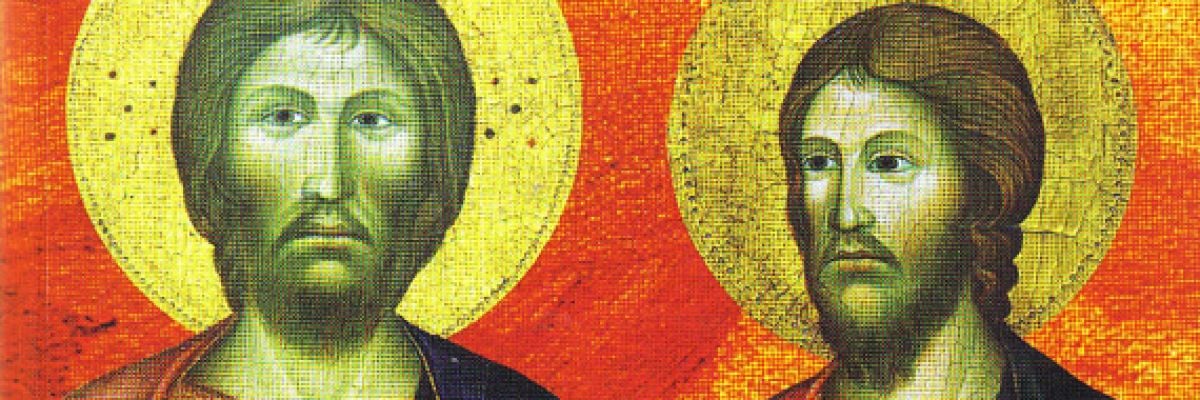
Catholic apologist Joe Heschmeyer joins Cy Kellett to respond to a caller’s question about whether Jesus had brothers and sisters. What does Scripture really say about the so-called “brothers of Jesus”? Drawing on biblical context and Church teaching, Joe explains how Catholics understand these passages and why they don’t contradict the doctrine of Mary’s perpetual virginity.
Transcript:
Caller: Where do we find in the Bible Mary’s perpetual virginity?
Joe: Yeah, that’s a great question. The first place to look is the cross. When Jesus entrusts Mary to John, a non-relative, this is a pretty strong bit of evidence that Mary does not have other children. Because if she had other children, they would have a duty under Jewish law or Christian to take care of her.
Sometimes when you point this out to people, they’ll say, “Oh well, maybe they weren’t believers.” Are they modern atheists? What are you talking about? The Ten Commandments, when it says “honor your father and mother,” presupposes that—like, that’s not. Those words are not written primarily for children. That is about taking care of your elderly parents in their old age.
Now, that also includes caring for, you know, honoring your parents when you’re a child. But the Ten Commandments are not written principally for kids. I mean, all that talk about adultery and all that should be a clue. So there is, you know, and the New Testament is even quite clear: the person who doesn’t take care of their loved ones is worse than an unbeliever. Like, you have a duty to take care of your family. This is understood. Again, this is both a Jewish and a Christian principle.
So even if you want to hypothesize Mary had other kids who didn’t believe in Jesus, they would have still had a duty to take care of her. And according to the Protestants who believe Mary had other kids, James the Bishop of Jerusalem was one of her kids. And he did—he was not faithful enough, like he’s not holy enough to get to have his mom anymore. She’s taken away forever because he doubted for it. Well, what are you talking about?
So that’s the first bit of positive evidence.
Second, the so-called brothers of Jesus are very clearly not brothers of Jesus. So you have these references. One of the common passages brought up is Mark 6, where it says, “Is not this the carpenter, the son of Mary?” And then it says, “brother of James and Joses and Judas and Simon,” and “are not his sisters here with us?” So it sounds like they’ve got a bunch of kids.
But then you find out that at the cross of Jesus, James and Joseph’s mom is there. And it’s not Jesus’s mom; it’s one of the other Marys. That’s Mark 15:40 that refers to this other woman called Mary, the mother of James the Younger and of Joses. Depending on how you parse that, that may be the mother of one of the apostles.
All that is to say, the way that the Jews used the terms like “brothers” and “father” covered a wide range of relationships. So you wouldn’t say, “my great, great, great, great, great, great, great, great, great, et cetera, grandfather Abraham.” You just say, “my father Abraham.” You wouldn’t refer to Abraham and Lot, who are uncle and nephew, as uncle and nephew. You just call them brothers, as Genesis does.
So we have very clear instances of people being referred to as brother or sister or father or mother when it actually means something a lot more distant, because that’s how the people spoke at the time. So the evidence that allegedly points to Mary having other kids simply doesn’t.
Third, this involves a little bit of a deeper dive on Jewish marital customs. There’s a potentially confusing thing when you’re reading the infancy narratives in Matthew and in Luke. It often is translated as saying that Mary and Joseph were betrothed. Some bad translations even say like “engaged.” But that’s not really what’s happening there.
There’s two stages to a Jewish wedding, and after you become legally wed, the husband then has anywhere from three months to a year, depending on the circumstances, to make a home for his new wife. Beautifully, this is actually reflected in John 14, when Jesus says, “I go before you to prepare a place for you, that where I am, you may be.”
Also, this is marital imagery. He’s saying the church is already the bride, and now he’s going to go and prepare a home for the bride, because that’s what a new husband does. That doesn’t mean that, like, the church is the girlfriend of Christ. No, the church is the bride of Christ. Even though in 1 Corinthians 11, this same word for betrothal is used when St. Paul talks about the church being betrothed to Christ.
So Mary is legally wed to St. Joseph at the time of the Annunciation. This is why Joseph contemplates divorce. And you wouldn’t contemplate divorce if you’re just—oh, sorry, I said 1 Corinthians 11. I meant 2 Corinthians 11 earlier. This is why Joseph contemplates divorce. In Matthew 1, we hear explicitly that he’s considering putting her away. He’s getting legally divorced. That’s not like a breakup with a girlfriend or even calling off an engagement. That’s a legal divorce.
I mention all of that to say that when the angel Gabriel comes to this married woman named Mary and tells her she’s going to have a child, she is not shocked that she’s going to be bearing the Messiah. She’s not shocked that she’s talking to an angel. She is shocked that she’s going to have a kid at all.
And as St. Augustine points out, her response, “How can this be, since I know not man?” suggests that she has made some kind of prior vow, or else her response makes no sense at all.
And also, Matthew 1 talks about how they continued to not have relations until Jesus was born. Now, two things to note there. One, that “until Jesus was born” doesn’t mean that they had relations when Jesus was born. That would have been actually forbidden under Mosaic law to have relations with someone who’s just given birth. It means from the start to the finish of the pregnancy, she remains a virgin.
And why does Matthew specify those two points? He tells you in the prior verse that this is fulfillment of Isaiah 7, which says a virgin will conceive and bear a child. So to prove that Isaiah 7 is fulfilled, Matthew has to establish that Mary is a virgin from the beginning of her pregnancy until the end of her pregnancy, with no comment being made in Matthew about anything after that.
But here’s the second point that I see people not noticing. Why are Mary and Joseph not having relations throughout the pregnancy? They’re living together, they’re traveling together, they’re, you know, going to Bethlehem together, and they’re clearly not engaged in marital intimacy throughout this. What’s going on there?
And the easy answer to that, when you look at some of the biblical evidence—and this is what the early Christians believed overwhelmingly as well—is that what’s going on here is Mary didn’t have relations with Joseph because she was perpetually a virgin.
Caller: That makes sense. Yeah.
Cy: That sounded like satisfaction. So I’m gonna leave it there and try to get another question in. Aaron, thank you very much!
Sean’s in Cleveland, Ohio…



